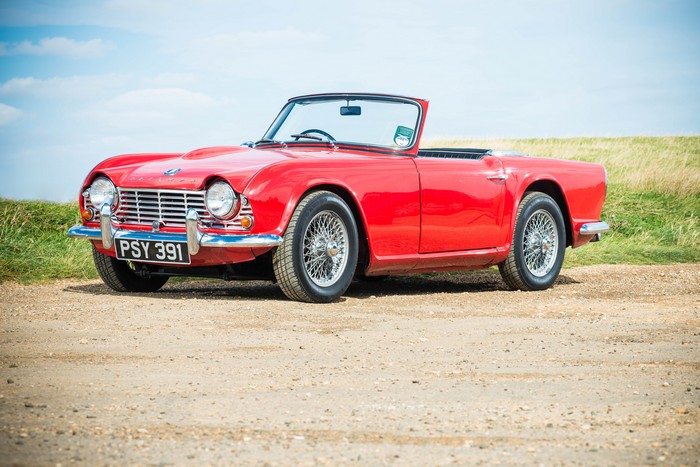The Triumph TR4 was introduced in 1961 to follow its very successful predecessors, the TR2 and TR3. Code named “Zest” during development, the body was given a more modern and updated appearance by Michelotti, but its drive train and chassis remained the same, using the well-proven 4-cylinder pushrod unit; however, its capacity was increased from 1,991 cc to 2,138 cc.
Handling was improved by a three-inch wider track, and steering was also updated to the more precise rack-and-pinion system. Internally, the car gained wind-up windows and the new, angular rear end allowed for a boot with a very reasonable luggage capacity for a sports car. Another innovation was the option of an alloy hard top with a removable roof panel that was five years ahead of Porsche’s famous 911 Targa. A total of 40,235 cars were built between 1961 and 1965, and over the years, this car has become one of Triumph’s most popular sports cars.
The current owner stated that this car has been the subject of a nut-and-bolt restoration over a four-year period by marque specialist Nigel Wiggins. This is backed up with a full photographic record and supporting documentation — with flawless paint finish throughout, superb shut lines and beautiful chrome work. This car really is “best of breed.” It was chosen as the cover car for Bill Piggott’s book on the restoration of the TR4/5/6 range. Finished in Signal Red with contrasting black leather interior and black roof, this car looks absolutely stunning from every angle. It’s petite, low and lovingly detailed. This particular example also benefits from overdrive and a removable rear bench seat.
